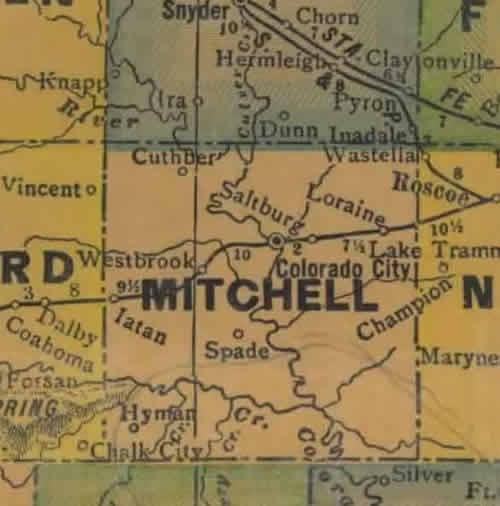Spade Texas, Mitchell County. (original) (raw)
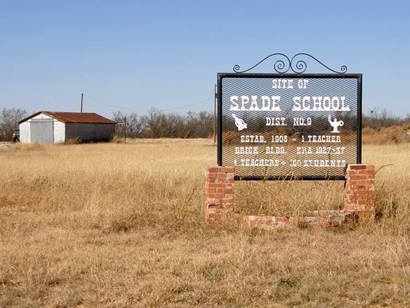
History in a Pecan Shell
Settlement of the region began in the 1890s, and a small community developed around the rural school of Liberty, established in 1899 near Wildhorse Creek. Early settlers included the families of R. E. Hargrove, J. L. VanZandt, P. W. Crump, and J. D. Falkner. A post office was opened there in 1902 and was named Herbert for Colorado City postmaster Herbert Hazard.
In 1909 the office was renamed Spade after the Spade Ranch. The post office served the community until it was moved to Colorado City in 1912. By 1910 Spade had the post office, a general store, a gin, a blacksmith shop, a school, a Baptist church, and a Woodmen of the World Lodge; at that time the community was a stop on the Colorado City-Sterling City stage line.
The old Liberty school was renamed Spade in 1910. In 1930, 101 students attended the school and the district encompassed 124 square miles. The Spade school was consolidated with that of Westbrook in 1938.
The community was locally known during the early 1900s for its Fourth of July picnics and political rallies, one of which was attended by James V Allred. A Methodist church was built about 1930, and by 1947 the town reported one store, two churches, and ten residents. One church and a cemetery remained in 1972.
Spade was still shown on county maps in the 1980s.
See Spade Community Cemetery Historical Marker
Spade, Texas Today
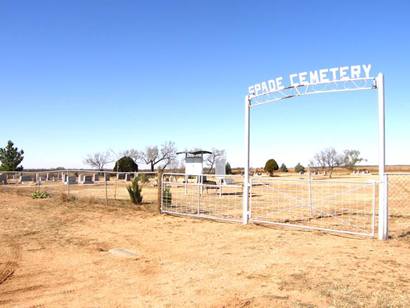
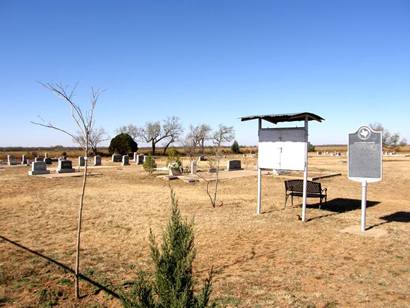
Cemetery Historical Marker:
Spade Community Cemetery
This cemetery began as a family graveyard on the farm of R.F. (1868-1927) and Addie (1872-1956) Hargrove, when their infant son died in April 1898. The Hargroves gave 2.5 acres of land surrounding their son's grave to the Spade Community for cemetery and school purposes. The community schoolhouse, originally called Liberty School, was used for numerous purposes, including funerals, grange meetings, church services, and community events. According to available oral history, the school building was located in the northeast corner of the cemetery property.
The Ellwood-Renderbrook Spade Ranch, from which the community takes its name, adjoins the rural settlement on its southern boundary. From 1902 until 1912 a U.S. Post Office served the community; other businesses in the area included a cotton gin, a store, and a blacksmith shop.
Since 1898 this graveyard has served as the sole burial ground for the farming and ranching community of Spade. Among the interments here are Hargrove family members; victims of the 1918 influenza epidemic; and veterans of the Civil War and World War II, including a member of the Women's Army Corps.
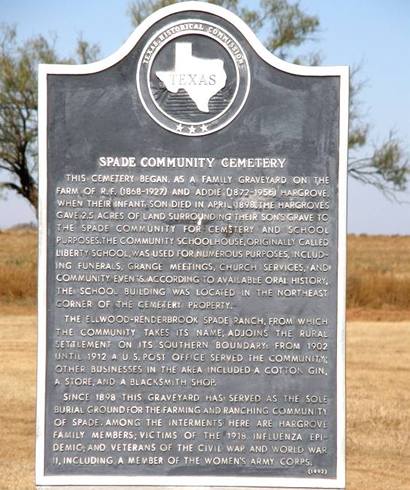
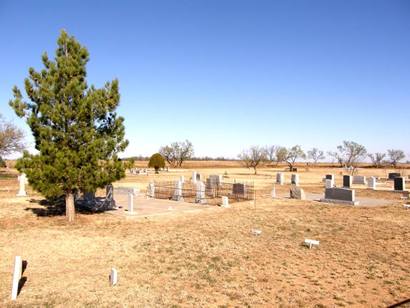
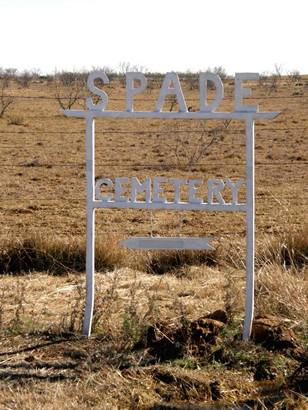
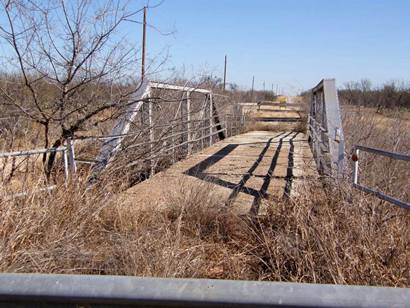
A closed bridge near Spade
Photo courtesy Barclay Gibson, December 2009

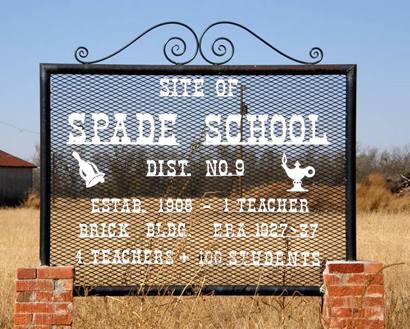
SPADE, TEXAS
by d.knape
A town too small
to make the grade,
is all that can be said
of Spade,
It disappeared
there is no doubt,
now no one knows
its whereabouts.
©
d.knape
January 26, 2016
Texas Escapes, in its purpose to preserve historic, endangered and vanishing Texas, asks that anyone wishing to share their local history, stories, landmarks and recent or vintage photos, please contact us.
